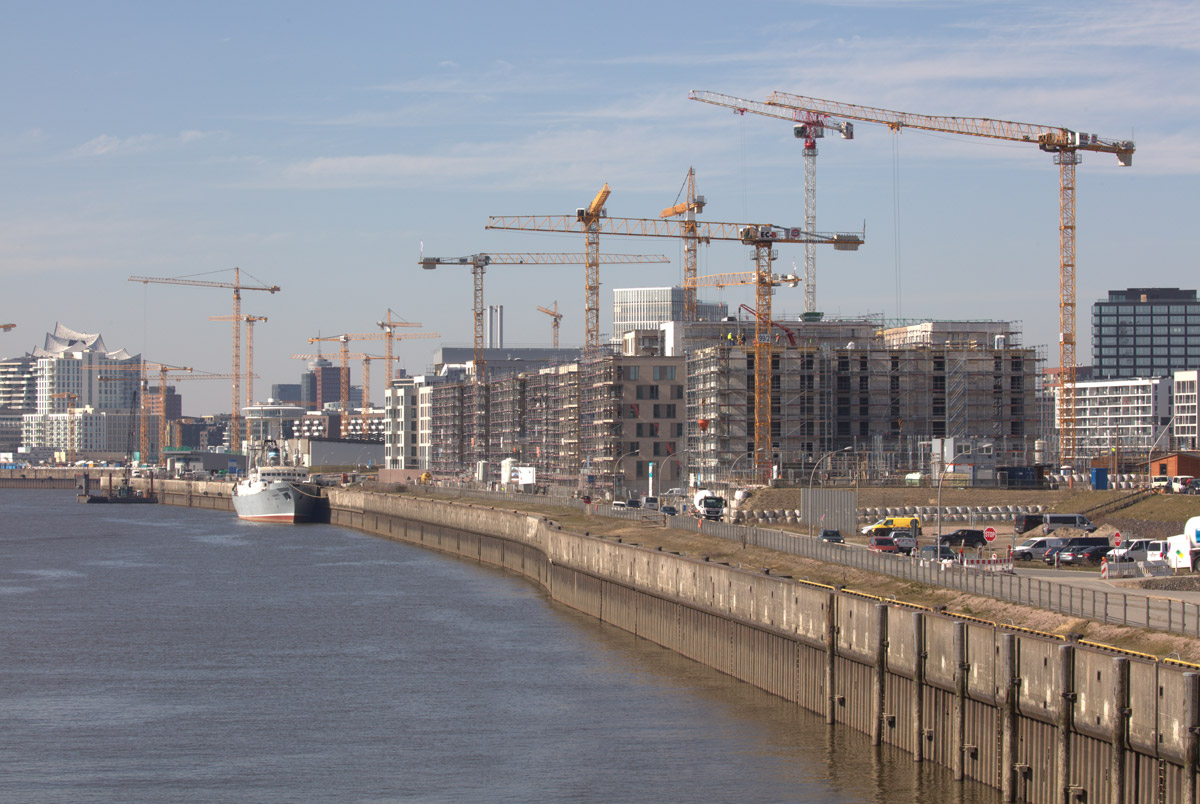25 Liebherr tower cranes for new Hamburg district
16 March 2021For the past two years, Liebherr tower cranes have been used for the construction of the Überseequartier, a new district in Hamburg, Germany.
The project involves the construction of 14 individual buildings on a 419,000sqm site. The new district will comprise an office tower, residential buildings, a cinema, shopping centre as well as a cruise terminal.
Contractor Züblin decided on equipping the entire construction site with machinery from a single manufacturer in order to meet logistical requirements; Liebherr was chosen. Züblin has been working with the manufacturer’s local dealer Feurig, who has a rental fleet of 200 cranes at its depot in Hamburg.
The original idea was to allocate a crane to each building. However, as planning progressed, Liebherr’s project department—Tower Crane Solutions—identified that further cranes would be required to ensure a cost-effective handling capacity across the entire site. They developed a crane concept involving a total of 25 tower cranes.
The number of cranes and the size of the area posed challenges in terms of planning and logistics, as all cranes had to be positioned in a way to prevent collisions between them and with surrounding buildings. For this reason, Liebherr tower cranes of various sizes were selected, the majority flat tops, and erected with different hook heights, ranging from under 30m to over 90m. Units from the 85 EC-B, 172 EC-B and 380 EC-H models were chosen for this job.
Although it wasn’t initially prioritised for all 25 cranes to work on site at the same time, external circumstances and Covid-19 led to this being a reality. Tower Crane Solutions factored this possibility into the planning from the outset.
They have not only provided assistance and advice during the planning phase, they are also doing so throughout its implementation. “An example of this support in action was when a chimney on a neighbouring property acquired scaffolding for its restoration, which extended the width of the chimney by around two metres. This had an impact on one of the tower cranes on site. Raising the height of the crane wasn’t possible for structural reasons. So, a shortening of the jib was calculated without further ado. This was the simplest, quickest and most cost-effective solution,” said Liebherr.
